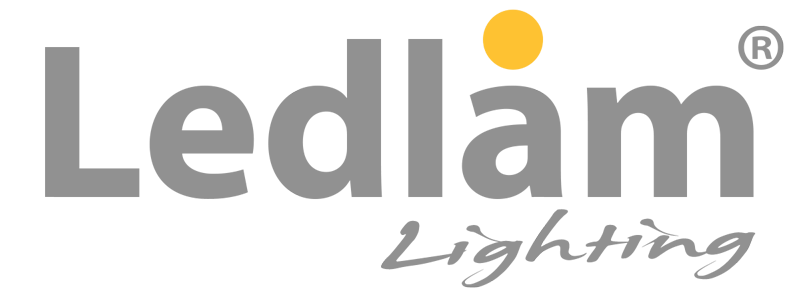Shade temperature is mostly understood to be the colour of sunshine. Technically talking, it’s the scientific measurement of the temperature at which a black physique would emit radiation of the identical coloration as a given object. How does a temperature scale change into a measurement of coloration?
What’s Shade Temperature?
Earlier than shifting ahead, it is very important word that the phrases cool and heat don’t relate to the temperature on the Kelvin numbering scale. As a substitute, the colour shift is a correlation noticed when studying temperature. Shade doesn’t have a temperature, however temperature has a coloration.
To grasp this, it helps to look into the place the measurement comes from. Earlier than the creation of thermometers, smiths, potters, and glassblowers relied on the colour of the glowing materials to trace progress. Think about what occurs when an iron bar is heated to a hovering temperature. First, it glows purple, after which because the temperature rises, it turns into blue-white. These craftspeople labored with the understanding that almost all minerals had a singular coloration at completely different phases because the mineral heated.
The Historical past and Science of Shade Temperature
Issac Newton darkened his Cambridge College room in 1665 and made a gap in his window shutter to permit a single beam of daylight to enter his Cambridge College room in 1665. He took a glass prism and positioned it within the sunbeam. The consequence was a multicolored band of sunshine often known as a coloration spectrum. Newton then positioned a second prism, and the rainbow was restored to white gentle. Newton was the primary scientist to show that white gentle is comprised of all seen colours.
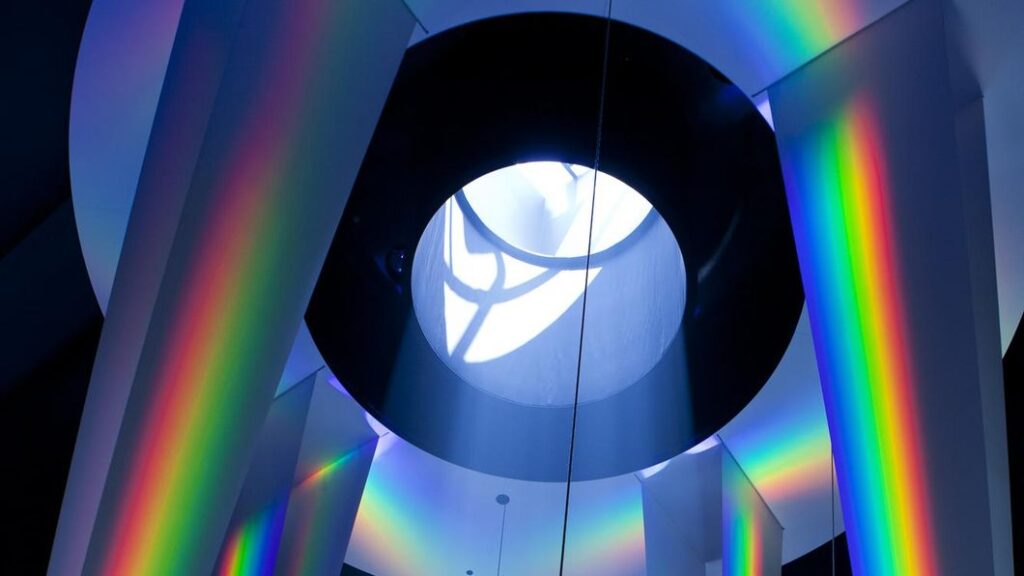
In 1724, Daniel Fahrenheit devised a mercury thermometer utilizing the quantity 180 because the variety of steps (levels) between freezing and boiling water. Twenty years later, in 1742, Anders Celsius created a measurement that put 100 steps between those self same two factors.
The prism’s function in separating the completely different colours of seen gentle was mixed with using specialised thermometers in 1800 when William Herschel found infrared whereas learning the heating results of various colours of sunshine.
In 1802, Joseph Louis Homosexual-Lussac proved {that a} tube floating atop a column of hydrogen would rise and fall uniformly with the temperature. With this information, he additionally famous that if cooling continued, the tube would hit the underside at -273℃. Scientists seek advice from this bottoming out as absolute zero. At this level, particles could have minimal movement and dysfunction disappears. As a result of there’s minimal motion, there’s nothing to create warmth, which means that nothing could be colder than absolute zero.
The Kelvin Scale and Electromagnetic Radiation
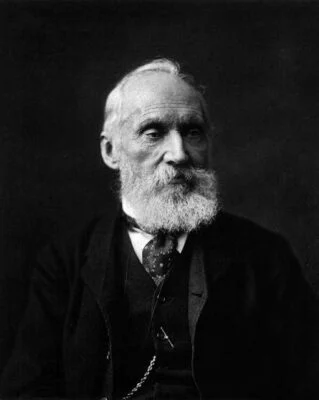
William Thomson, higher often known as Lord Kelvin, is finest recognized for his work on Black Physique Radiation. He used a temperature scale in his work, which now bears his title, Kelvin (Okay). That is an Worldwide System of Models (SI) for thermodynamic temperature, which begins at absolute zero. It makes use of the identical magnitude as Celsius diploma, which means that the distinction between water freezing and boiling is 100 levels in each scales.
Lord Kelvin’s work targeted on the dynamical principle of warmth, which states that warmth is completely different from the opposite types of power in that it doesn’t get saved inside a system. As a substitute, it’s at all times power in movement. This movement is named an electromagnetic wave.
Electromagnetic radiation is radiation that has each electrical and magnetic fields and travels in wavelengths. These wavelengths, or frequencies, are available seven varieties. The seven types of wavelengths are:
- Radio waves
- Microwaves
- Infrared waves
- Seen gentle waves
- Ultraviolet waves
- X-rays
- Gamma rays
In keeping with Kelvin’s findings, an idealized opaque, non-reflective physique (often known as a black physique radiator) at absolute zero emits no detectable power. When heated, the atoms and molecules launch a part of their power within the type of electromagnetic radiation gentle. Electromagnetic gentle waves, represented in growing power, go from infrared to seen gentle (purple to orange to yellow to inexperienced to blue) to ultraviolet. Seen gentle is the part of the electromagnetic spectrum that’s discernible by the human eye.
To place this into perspective, at the hours of darkness, the human eye begins to choose up the emissions of power someplace across the 773K vary within the type of grey. It’s because the depth is so low that it solely prompts the attention’s grey-level sensors. With the rising temperatures, this glow turns into seen even with background gentle.
This may be simply seen when heating iron. Because the temperature of the article rises a coloration shift is seen, first as a uninteresting purple, then yellow, and right into a blueish-white. With the documentation of this seen spectrum shift, the temperature turned recognized by its coloration. In the present day this seen spectrum shift is represented by Correlated Shade Temperature.
The yr 1931 was massive for the science behind figuring out temperature utilizing coloration. The Worldwide Fee of Illumination introduced the XYZ coloration house offering a option to visually characterize gentle and coloration within the type of graph coordinates. Y represents luminance, whereas X and Z comprise all attainable chromaticities of that luminance, or the target specification of the standard of coloration no matter its luminance. American physicist Deane B. Judd revealed a paper on the character of chromatic stimuli, or the distinction between the feeling of chromaticity. American chemist and physicist Raymon Davis coined the time period Correlated Shade Temperature (CCT), which he outlined as the first part temperatures utilizing trilinear elements (or XYZ).
Correlated coloration temperature is the temperature of a black physique radiator whose perceived coloration most intently resembles that of a given stimulus on the identical brightness and underneath specified viewing situations. CCT makes use of XYZ coloration house and the feeling of chromaticity to measure how the seen spectrum of “white” gentle seems on the nice and cozy to chill scale relative to diploma Kelvin. This math permits for an approximation of the colour temperatures of varied gentle sources.
Utilizing CCT, it was decided that the seen gentle spectrum hosts temperatures between 1,000K to 10,000K. The colour of pure sources had an approximate Kelvin temperature. Daylight is mostly very cool, with coloration temperatures of 5300K to 5500K. Sundown and dawn, in distinction, are hotter with a Kelvin measurement of 2000K to 3000K.
Synthetic gentle has as a lot variation in CCT as pure sources. Candlelight is someplace within the 1,850K to 1930K vary. Typical family tungsten and customary incandescent lights exist within the 2500K to 2900K vary. Theatrical functions use Halogen gentle sources which are within the 3000K vary. A Compact Fluorescent Lamp (CFL) falls into the 4200K vary, making it near the identical coloration temperature as discovered within the mid-morning and mid-afternoon solar.
CCT is used to find out the temperature of a lightweight on the supply, however within the mid-Twentieth century, coloration scientists took an curiosity in assessing how synthetic lights might precisely reproduce colours. The Shade Rendering Index (CRI) was created for this goal.
CCT and CRI measure completely different facets of coloration. CCT is the colour of the sunshine emitted by the supply by wanting on the supply. CRI measures the mirrored coloration worth of an object underneath the sunshine supply or how the sunshine supply “renders” the colours of an object. That is measured on a scale of 0 to 100, with 100 being the complete spectrum of seen gentle and probably the most correct coloration illustration.
An object’s coloration of an object is decided by its mirrored coloration wavelength. For instance, a sweet apple seems purple as a result of it displays the purple wavelengths and absorbs all different colours within the seen spectrum. If a man-made gentle bulb seems to have a CCT equal to pure daylight, one can use CRI to find out if it precisely represents the identical spectrum. If it does have the identical spectrum, then the copy (R) will probably be similar and painting the identical coloration vary as the unique supply. Whether it is lacking a part of the seen gentle spectrum, the mirrored coloration will seem distorted or much less vibrant.
The tactic for measuring CRI is much like the visible evaluation made with the sweet apple however is completed utilizing algorithmic calculations as soon as the spectrum of the sunshine supply is measured. First, the CCT for the sunshine supply have to be calculated to pick the suitable spectrum to make use of for comparability. This supply will probably be shined upon a sequence of coloration swatches with the mirrored coloration measured. The 2 coloration samples are in contrast and formulaically decide the R rating for every coloration swatch. The R-value for a selected coloration signifies the flexibility of a lightweight supply to precisely render that individual coloration. The one option to precisely measure a lightweight supply’s CRI worth is to make use of a specialised spectral measurement machine. The info accrued by these gadgets are what lighting producers depend on to ensure coloration rendering lifelike metrics.
When referring to gentle accuracy, every coloration temperature has a “reference customary,” which is the sunshine supply that gives probably the most pure lighting for comparability. As an example, 6500K has a reference customary that’s about equal to the sunshine at midday on a shiny summer time day. To make this comparability, the sunshine bulb could be in comparison with the sunshine from its reference customary. This requirement to have a coloration temperature worth to find out the comparability coloration signifies that CRI is nearly meaningless by itself. A lightweight bulb with a 95 CRI appears spectacular till it’s revealed that it’s in comparison with the wavelength of a 2700K incandescent gentle bulb.
Due to this, it is very important contemplate coloration temperature for the applying first after which contemplate CRI afterward. Need a room to duplicate the sunshine of pure daylight? Decide a excessive coloration temperature worth (5000K or greater) after which discover a gentle bulb in that vary with a excessive CRI worth after.
Shade Temperature in LEDs
The normal lightbulb emits gentle by heating a wire filament with an electrical present to emit power packets of sunshine known as photons. LEDs use a phenomenon the place photon emission is created by the digital excitation of a cloth to create gentle. Essentially the most incessantly used materials is gallium arsenide, however there are numerous variations of this compound used. All of those compounds are discovered on the III to V group of semiconductors, or compounds present in columns III and V of the periodic desk. That is essential to recollect as a result of relying on the mix of semiconductors, the wavelength (and coloration, in flip) could be modified. Every mixture is matched to a Kelvin and its corresponding CCT.
LED lightbulbs can even embody a CRI quantity to offer the accuracy of coloration rendering, which averages between 80 to 90 on the CRI scale. This accuracy makes them higher suited to an indoor setting than various lighting choices (resembling the common fluorescent tube that averages a CRI of round 50).
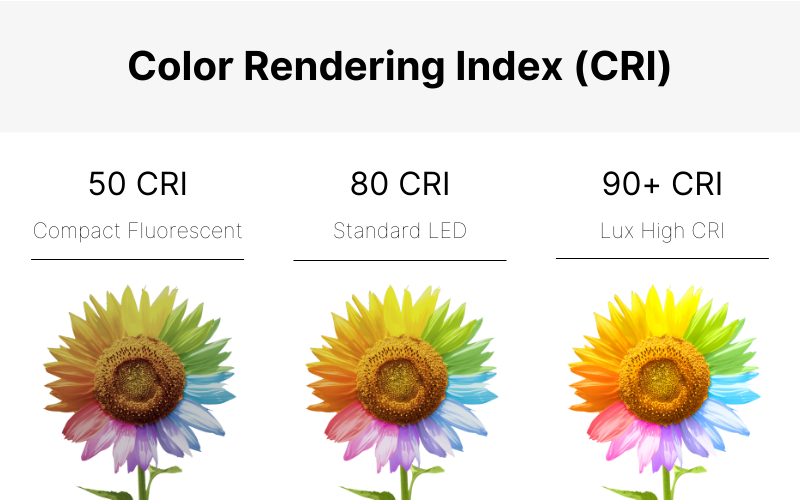
The Position of Shade Temperature in Lighting Design
Consider a time an workplace assembly room felt overwhelming. Now contemplate the enjoyable sensation of a campfire. These examples are on reverse ends of an emotional sensation: one oppressive and the opposite assuaging. Now consider the colour temperature of these conditions. The campfire was heat in coloration, whereas the workplace was chilly. In each conditions, the colour of the sunshine performs a job within the mind’s response to the setting. For that reason, selecting the proper coloration temperature could possibly be one of the essential components in lighting an area.
The pure coloration temperatures seen all through the day fluctuate from heat to chill to heat. It is a sample that helps affect the inner clock known as the circadian rhythm. Within the pure world, there are three sources of sunshine: the solar, the night time sky, and hearth. Synthetic gentle impacts our cognitive processes. Our our bodies are wired to launch hormones at completely different instances of the day, affecting temper and application. Our minds are most energetic when the solar is at its brightest, however because the solar reaches the horizon, the physique begins to cool down and chill out. Mild indicators our brains to regulate our starvation response, physique temperature, and hormonal secretion. Latest research present constructive well being shifts in environments the place synthetic lighting mimics the temperatures of the solar all through the day.
Research present that the minds could be tricked into behaving in particular methods primarily based on the colour temperature. Hotter gentle tends to be extra enjoyable as a result of our inside clocks affiliate it with the ending of the day and making ready to sleep. Cooler colours have the alternative impact as a result of that clock tells the mind it’s the center of the day and needs to be energetic. With that information, coloration temperature is finest chosen by contemplating using the house.
- When sharp focus is required, choose a coloration temperature that’s nearer to sunlight within the 3500K to 4100K spectrum.
- For leisure, place lamps which are nearer to golden hour daylight or candlelight (2000k- 3000k).
- In areas that fluctuate functions, mimic the angle of the solar when choosing a coloration temperature.
- Place a “impartial” coloration temperature in overhead fixtures within the 3500K to 5000 vary for duties that want extra consideration.
Daylight originally and finish of the day is considerably heat, and plenty of imagine that the inside ought to reply in an identical method. As the peak of the fixture approaches the ground, the colour temperature warms up, mimicking the pure cycle of the solar.
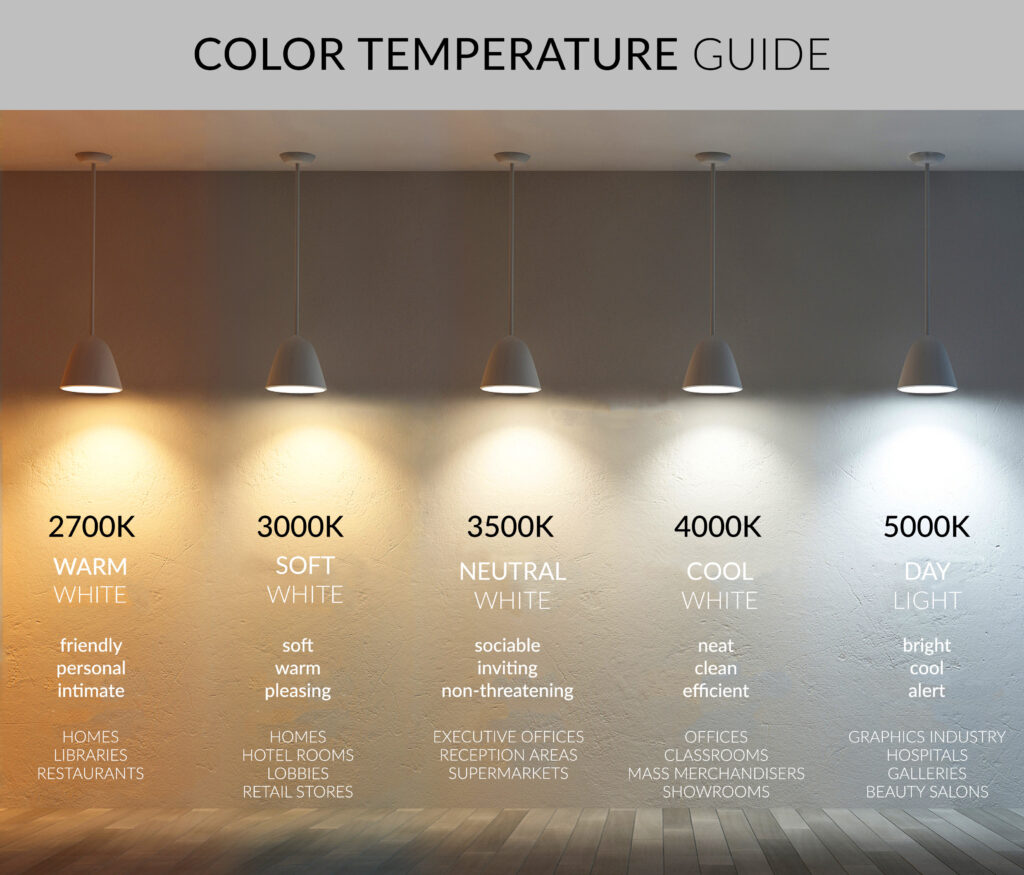
Cool White gentle, coloration temperatures 5000K and over, add a bluish tint to current colours. This coloration vary flattens reds and enhances current blues. Cool whites create a crisp, invigorating, and attentive temper as a result of similarity to the depth and readability of daylight. Lamps on this vary are sometimes utilized in warehouses and industrial services. Essentially the most accessible temperatures within the cool spectrum are Shiny White and Daylight White.
Shiny White, 5000K on the colour scale, is vibrant and crisp with out distorting coloration. That is the vary that most closely fits OSHA laws. Due to this, this coloration vary is usually utilized in warehouses, stadiums, and healthcare environments. Daylight White gentle, at 6500K, is a favourite of designers for issues resembling inside agriculture, artwork studios, safety lighting, auto physique retailers, avenue lamps, and enormous industrial areas. This spectrum is nice for these functions as a result of it resembles daylight. This similarity ensures consistency of coloration all through the day.
Impartial White gentle, with coloration temperatures between 3500K to 5000K, improve all current colours. This coloration accuracy makes this vary extensively utilized in retail, places of work, and showrooms. This coloration vary enhances effectivity and vibrancy whereas nonetheless giving the sensation of steadiness to an area. The 2 coloration names on this temperature vary are Impartial White and Cool White. Usually represented on this vary is the “Impartial White, or 3500K coloration temperature. Thought of the closest to true white, this coloration temperature is utilized in workplace areas and retail shops. The title Cool White is a bit deceptive. This coloration has a temperature of 4100K, effectively throughout the impartial coloration vary. On the cooler finish, this coloration is nice for areas the place precision, cleanliness, and focus are essential, resembling garages, artwork studios and grocery shops.
Heat White gentle, coloration temperatures 3500K and under, add an amber tint to current colours. This causes the reds to seem extra vibrant and the blues to seem duller. This coloration vary feels welcoming, cozy, calm, inviting and intimate, which is why it’s utilized in properties, eating places, spas, and hospitality initiatives. Heat White is taken into account to be the colour temperature most incessantly purchased for the house and has a temperature studying of 2700K. This particular temperature is utilized in residing rooms, eating places, and resorts. On the cooler finish of this vary is the colour often known as Smooth White, which has a measurement equal to 3000K. This supplies a soothing ambiance with extra readability, so it’s usually positioned in loos and residential kitchens.
In rooms the place daylight supplies ambient lighting, designers ought to choose a commensurate coloration temperature. As established, daylight is on the cooler finish of the spectrum. Lamps within the 5500k and over vary look like too chilly after the solar has set. For that reason, some designers select to position lamps within the 3500K and 4100K vary. This impartial vary isn’t too heat when mixed with daylight and doesn’t seem blue within the night. 3000K will probably be noticeably hotter and should go well with when a heat coloration temperature is desired at night time.
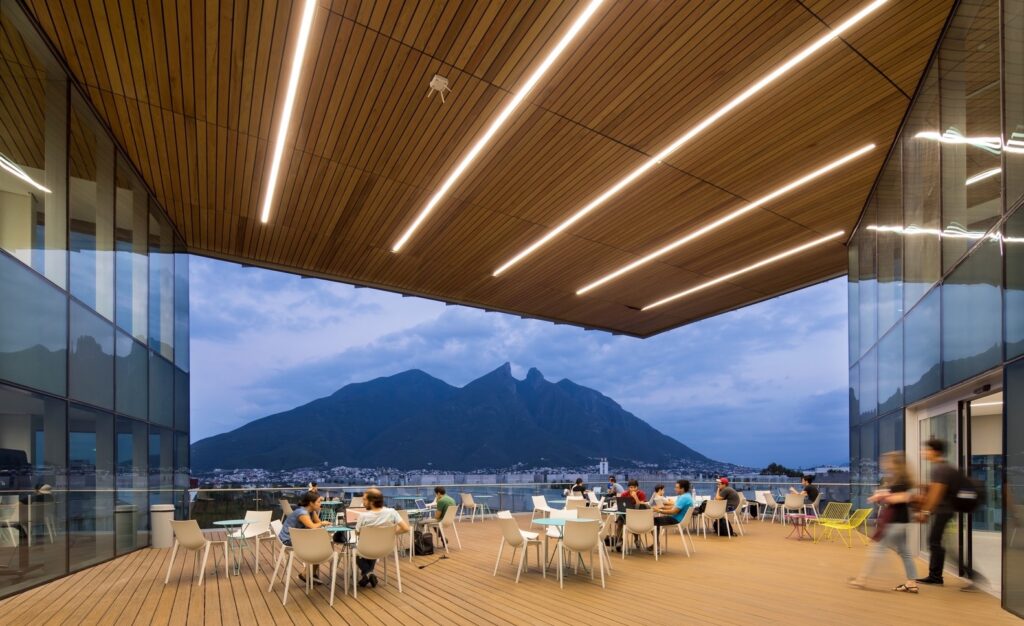
Citations:
Augustyn, A. (2019, April 4). Celsius. Encyclopædia Britannica. Retrieved April 13, 2023.
Augustyn, A. (Ed.). (2023, February 5). Fahrenheit Temperature Scale. Encyclopædia Britannica. Retrieved April 13, 2023.
Davidson, M. W. (2015, November 13). Color Temperature. Molecular expressions: Science, Optics, and also you: Mild and coloration – coloration temperature. Retrieved April 13, 2023.
Davis, R. (1931). A Correlated Color Temperature for Illuminants. Bureau of Requirements Journal of Analysis, 7(4), 659.
Durmus, D. (2021, July 25). Correlated Color Temperature: Use and Limitations. Sage Journals. Retrieved April 18, 2023.
Fu, X., Feng, D., Jiang, X., & Wu, T. (2023, February 20). The Effect of Correlated Color Temperature and Illumination Level of LED Lighting on Visual Comfort during Sustained Attention Activities. MDPI. Retrieved April 17, 2023.
Gaur, A. (2023, January 13). Conservation of Energy. Encyclopædia Britannica. Retrieved April 14, 2023.
Gregersen, E. (2021, February 10). Absolute temperature scale. Encyclopædia Britannica. Retrieved April 14, 2023, from
Helmenstine, A. (2023, January 18). What is Absolute Zero? Temperature in Kelvin, Celsius, and Fahrenheit. Science Notes and Initiatives. Retrieved April 13, 2023.
Lin, J., Ding, X., Hong, C., Pang, Y., Chen, L., Liu, Q., Zhang, X., Xin, H., & Wang, X. (2019, Might 17). Several Biological Benefits of the Low Color Temperature Light-Emitting Diodes Based Normal Indoor Lighting Source. Nature Information. Retrieved April 17, 2023.
Lotha, G. (2023, March 16). LED. Encyclopædia Britannica. Retrieved April 17, 2023.
Lotha, G. (2023, March 21). Absolute Zero. Encyclopædia Britannica. Retrieved April 14, 2023.
Merriam-Webster. (2023). Color Temperature Definition & Meaning. Merriam-Webster. Retrieved April 13, 2023.
Regents of the College of California. (2023). Forum Question: How Much Heat Does a Red, Orange, Yellow, Green, Blue, Purple, Black, and Pink Light Give Off? UCSB Science Line. Retrieved April 13, 2023.
Sanker, E. A. (2023, March 11). What Is the Color Rendering Index? All of the Science. Retrieved April 17, 2023.
Sarola, J. (2020, April 7). Sir Frederick William Herschel, Infrared Light (IR) Discoverer. Sir Frederick William Herschel, infrared gentle (IR) discoverer | NIRS Analysis. Retrieved April 14, 2023.
Scientific American. (1998, November 16). Ask the Experts: What is Charles’ Law? Scientific American. Retrieved April 13, 2023.
Sharlin, H. I. (2022, December 13). William Thomson, Baron Kelvin. Encyclopædia Britannica. Retrieved April 13, 2023.
Yaguchi, H., David, A., Fuchida, T., Hashimoto, Okay., Heidel, G., Jordan, W., Jost-Boissard, S., Kobayashi, S., Kotani, T., Luo, R., Mizokami, Y., Ohno, Y., Pardo, P., Richter, Okay., Smet, Okay., Teunissen, Okay., Tsukitani, A., Wei, M., Whitehead, L., & Yano, T. (2023). Colour Fidelity Index for Accurate Scientific Use. CIE. Retrieved April 17, 2023.
Source link
